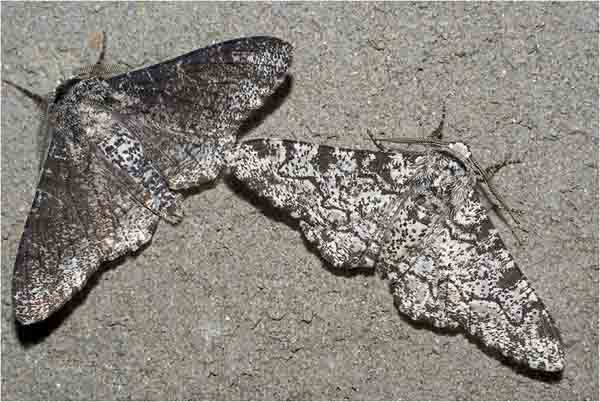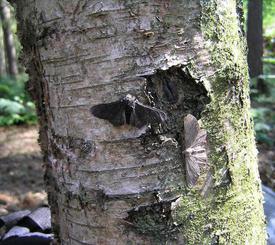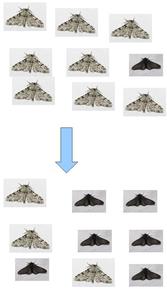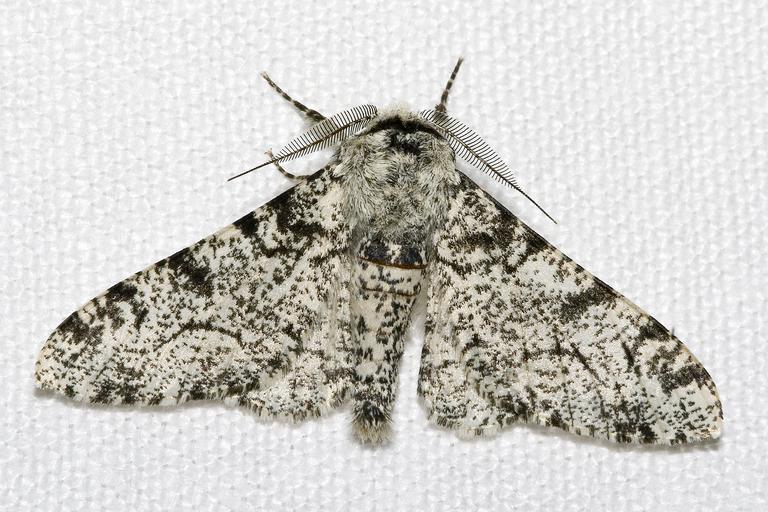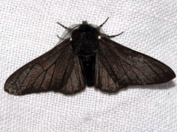 | ||||
Natural and Artificial Selection
Biological Change in Wild & Domestic Animals
What Is Natural Selection?
Natural selection is the mechanism of evolution, the process in nature by which only the organisms that are best adapted to their environment tend to survive and reproduce, transmitting their genetic traits to the next generation.
Article Summary: Natural selection is the driving force of evolution. The environment selects the winners and losers. In artificial selection we are the shapers of other living things.
Comparison of Artificial and Natural Selection
 | ||||||
SPO VIRTUAL CLASSROOMS
Individuals less well adapted to their environment tend to be eliminated, where environment represents the combined biological and physical influences.
Natural Selection Example: The Peppered Moth
The peppered moth (Biston betularia) is a temperate nocturnal moth species that provides a great example of natural selection.
Page last updated: 11/2015
You have FREE access to a large collection of materials used in a college-level introductory biology course. The Virtual Biology Classroom provides a wide range of free educational resources including PowerPoint Lectures, Study Guides, Review Questions & Practice Test Questions.
Resistance to antibiotics is increases though the survival of individuals immune to the effects of the antibiotic. Their offspring then inherit the resistance, creating a new population of resistant bacteria.
The Peppered Moth Pre-industrial Revolution: The common color of peppered moths was originally light grey (Biston betularia f. typica), and this color type represented the predominant form in England prior to the beginning of the industrial revolution. The moth’s light grey color closely matched the lichen-covered trees in their environment.
(Lichens are a slow growing life form that you can find on the bark of many trees and in decomposing wood).
There was also a genetic color variant in the moth population that resulted in some very dark colored moths (Biston betularia f. carbonaria) but these dark-colored moths were relatively rare. Their numbers remained low because when they landed on the light grey lichen-covered tress, these moths were easy targets for predators.
Biston betularia typica (light) and carbonaria (dark) morphs on the same tree. The light-colored typica (below the bark's scar) is nearly invisible on this tree, camouflaging it from predators.
The Peppered Moth After the Advent of Industry: Early coal-based industry was extremely dirty. Around large cities, everything was essentially covered in soot. This high level of pollution killed the light grey lichens on trees and the bark became much darker in appearance.
Over generations, the polluted environment continued to favor darker moths, and they progressively became more common. By the late 19th century, 98% of the moths near cities were black.
When the light-colored peppered moths landed on the same trees they had always landed on, they were extremely visible against the dark bark, and easy targets for predators. In this environment, the dark colored moth variant more closely matched to color of the trees and was now harder for predators to spot.
Mock-up illustrating peppered moth population shift based on pictures taken by Olaf Leillinger.
Biston betularia typica (above) and carbonaria (dark) below.
